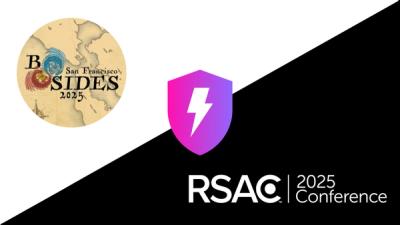
Security News
NVD Concedes Inability to Keep Pace with Surging CVE Disclosures in 2025
Security experts warn that recent classification changes obscure the true scope of the NVD backlog as CVE volume hits all-time highs.
Welcome to the Narvi API documentation! This guide provides detailed information on using the Narvi API, which follows REST principles for ease of integration. Here are some key points to keep in mind:
Please note that the Narvi API does not support bulk updates. Each API request is designed to work on only one object at a time.
To get started with our Node.js application, you can run the following command to install it:
npm install --save narvi
Authentication for the Narvi API is crucial for security. We use API keys and private keys to verify requests. To manage your API keys, visit our web application at https://my.narvi.com/app/developers/config/api-keys
Remember, your API keys grant significant privileges, so keep them secure! Avoid sharing your secret API keys in publicly accessible areas such as GitHub or client-side code.
To authenticate using our Node.js library, use the following code snippet:
const Narvi = require('narvi');
const narvi = Narvi({
apiKeyId: 'XXXXXXXX',
privateKeyFilePath: './narvi_private.pem',
});
Narvi employs conventional HTTP response codes to indicate the success or failure of an API request. Here's a general breakdown:
Here are some specific error codes and their meanings:
Narvi provides a range of API endpoints to interact with your account and perform transactions. Here are details on these endpoints:
List Accounts Endpoint: Retrieve a list of accounts associated with your account.
const response = await narvi.accounts.list()
Retrieve Account Endpoint: Fetch detailed information about a specific account by providing its unique identifier.
const response = await narvi.accounts.retrieve(ACCOUNT_ID)
Retrieve Transaction Endpoint: Access detailed information about a specific transaction using its unique identifier.
const response = await narvi.transactions.retrieve(TRANSACTION_ID)
List Transactions for an Account Endpoint: Retrieve a list of transactions associated with a specific account.
const response = await narvi.transactions.list({ account_pid: ACCOUNT_ID })
Create Transaction Endpoint: Initiate a new transaction within the Narvi platform.
const response = await narvi.transactions.create(TRANSACTION_PAYLOAD)
To create a new transaction using the Narvi API, you'll need to provide a payload object with the following structure:
interface TransactionPayload {
account_pid: string; // Unique identifier for the Narvi accountm e.g., 'A2ERSYBWO9KTC4I4'
currency: string; // Currency code, e.g., 'EUR'
amount: number; // Transaction amount in cents. For "EUR 120,00.99" it would be: 12099
recipient: {
name: string; // Recipient's name, e.g. 'Simo Hayha'
number: string; // Recipient's bank account number e.g. 'FI4179600176830755'
address: string // Recipient's address, usually a street name with number, e.g., 'Lapinlahdenkatu 16'
city: string; // Recipient's city name, e.g., 'Helsinki'
zip_code: string; // Recipient's zip code, e.g., '00180'
country: string; // Recipient's country code, e.g., 'FI'
};
remittance_information: {
ustrd: string; // Transfer title:, e.g., 'Payment for educational course'
};
}
Narvi's API incorporates a robust pagination system that is designed to efficiently handle large datasets. This system utilizes cursor-based pagination, allowing you to navigate through lists of resources with ease. To work with the pagination system, you'll primarily interact with the ApiSearchResult interface, which is used for paginated responses, and the RangeQueryParam interface, which is used for filtering resources within a specific range.
ApiSearchResultThe ApiSearchResult interface defines the structure of paginated responses in Narvi's API. Here are its key properties:
results: An array containing the current page of results. These are the resources you requested. Maximum of 20 items per one request.
next: The absolute URL with a cursor token to use when fetching the next page of results. If next is null, it indicates that there are no further results to retrieve.
previous: The absolute URL with a cursor token to use when fetching the previous page of results. If previous is null, it means you are on the first page of results.
To retrieve the next page of results, you can use the next cursor token provided in the ApiSearchResult. Here's an example of how to use it:
const nextPageUrl = response.next; // an absolute URL to fetch the next page
const nextPageCursor = Narvi.getPaginationCursor(nextPageUrl); // Helper function to extract the cursor query param from the url
const nextPageResponse = await narvi.someEndpoint.list({ cursor: nextPageCursor });
This code fetches the next page of results using the next cursor obtained from the previous response.
If you want to start fetching resources from a specific cursor obtained from a previous ApiSearchResult query, you can directly pass that cursor to the .list({ cursor: string }) endpoint. Here's how to do it:
const specificCursor = // Your specific cursor obtained from a previous response;
const specificCursorResponse = await narvi.someEndpoint.list({ cursor: specificCursor });
By using the cursor, you can pinpoint the exact position in the paginated dataset to begin fetching resources, providing fine-grained control over your data retrieval process.
RangeQueryParamAdditionally, Narvi's API provides the RangeQueryParam interface, which you can use to filter resources based on specific criteria such as date range or amount range. These filters can be applied when making requests to certain endpoints that support filtering.
Example usage for filtering based on date range:
const response = await narvi.someFilteredEndpoint.list({
added__gte: startTime,
added__lte: endTime,
});
You can customize the filter criteria according to your application's needs.
By leveraging the pagination system, cursor-based navigation, and filtering capabilities, you can efficiently manage and retrieve the data you require from Narvi's API while ensuring a smooth user experience in your application.
For more details and examples, please refer to our official Narvi API documentation.
Happy integrating with Narvi! 🚀
FAQs
Narvi API wrapper
The npm package narvi receives a total of 58 weekly downloads. As such, narvi popularity was classified as not popular.
We found that narvi demonstrated a healthy version release cadence and project activity because the last version was released less than a year ago. It has 0 open source maintainers collaborating on the project.
Did you know?

Socket for GitHub automatically highlights issues in each pull request and monitors the health of all your open source dependencies. Discover the contents of your packages and block harmful activity before you install or update your dependencies.

Security News
Security experts warn that recent classification changes obscure the true scope of the NVD backlog as CVE volume hits all-time highs.

Security Fundamentals
Attackers use obfuscation to hide malware in open source packages. Learn how to spot these techniques across npm, PyPI, Maven, and more.

Security News
Join Socket for exclusive networking events, rooftop gatherings, and one-on-one meetings during BSidesSF and RSA 2025 in San Francisco.